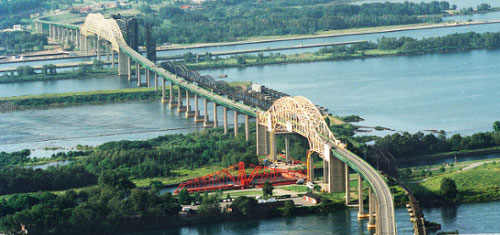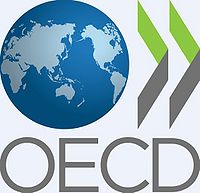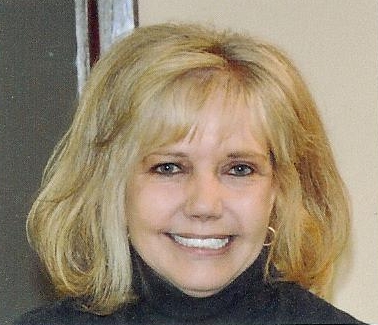
August 2014
In This Issue Message from Assistant Secretary
|
Shalini Bansal, Economic Development Specialist, Seattle Regional Office
I hope to bring on the ground practical insights to EDA’s team, thus forwarding the agency’s economic development mission in a meaningful manner. I would love to be engaged in developing tools that further grow our agency’s reach and effectiveness. I hope that I can help with keeping EDA nimble on its feet to accommodate the changing economic times that we live in today. |
Mari Sutton, Area Director, West Area Team, Denver Regional Office
As the elevator door closed, I looked up at the screen to read today’s headlines, recipes, and words of wisdom. As luck would have it, the monitor was displaying advice on sticking to the most important message to be conveyed, and not deviating from it, so that your audience knows what the most important point is. Great advice because I was making a mental list of EDA’s unique qualities. EDA has a lot of unique qualities: A wide range of economic development tools; flexible programs; a vast network of economic development professionals; and a dedicated staff committed to helping communities meet their economic development goals. So which one was the most important? It didn’t take me long to decide: It’s the EDA employees who have a genuine commitment to help communities overcome their economic challenges. EDA employees are responsive to communities’ inquiries, provide technical assistance, guide them through a maze of paperwork, and prepare a daunting pile of grant award documents – and they do so with expert knowledge and enthusiasm. Eventually, the work results in job creation for our economically-distressed communities. There is no better job than to create jobs for our fellow Americans, and I feel privileged to be working with some of the best and brightest in the Federal government. |
Willie Taylor, Regional Director, Philadelphia Regional Office
In my tenure at EDA, I have learned to listen carefully; ask the tough questions; and be open to new ideas. Regarding how it impacts my work, it allows me the opportunity to learn and grow as a practitioner in the economic development field as well as appreciate my teammates and their capabilities. Finally, the work that we do at EDA is mission driven with a keen purpose of supporting those communities that are seeking economic growth and an enhanced quality of life. |
Millie Hayes, Civil Engineer, Austin Regional Office
In my previous position with the US Department of Transportation, I worked on highway projects in urban metropolitan areas. There, I was asked to serve on national review teams for the Transportation Investment Generating Economic Recovery (TIGER) Discretionary Grant Program. During that time, I was able to become involved with projects that I wasn’t typically able to provide oversight for, such as mobility and multimodal projects in rural economically distressed areas throughout the country. While working on USDOT’s program, I realized that I was motivated by projects that would improve economically distressed areas. The purposes of the projects struck a chord with me, so I was thrilled to see a civil engineer vacancy for EDA earlier this year that would allow me to use my engineering and environmental expertise to focus on economic development projects. I started working in the Austin Regional Office in early June and I am excited to join an agency with the mission to promote growth in the economy. |
Phil Paradice, Regional Director, Atlanta Regional Office
Communities that approach EDA for assistance are typically in economic distress as a result of long-term deterioration or short-term, sudden and severe dislocations. EDA staff possess both the network and the knowledge to provide community leaders with a systematic approach and specific examples to advance their economic recovery. Often public and private sector leaders just need to gain a sense of the future that is possible, and step away from the past that was lost, to be able to take the first steps toward real recovery. When EDA staff accomplish that they have made an invaluable contribution in a community’s economic recovery, resilience to other events and sustainability. |
Success Story: Making Green Through Bi-National Trade in the Blue Water Region

The $700 billion trade relationship between the United States and Canada represents the largest binational trade relationship in the world. The Blue Water Region of east Michigan and southwest Ontario is home to the Blue Water Bridge, the nation’s third most valuable border crossing, and the only double-stack rail tunnel crossing between Michigan and Ontario. Therefore, the region is immensely important to sustaining the world’s largest trade relationship. In addition to these transportation links, the region is home to a number of other binational economic assets in the automotive, agricultural, and bio-manufacturing sectors that can be mutually leveraged to diversify and drive the transitioning binational regional economy.
In 2011, Michigan State University received an EDA grant to take steps to strengthen the regional economy. With help from EDA, the university sought to foster sustainable economic recovery across the region by developing a regional export strategy. This new strategy, aimed toward increasing trade with the region’s Canadian neighbors, would provide new markets for local businesses, strengthen regional trade infrastructure, support small businesses by facilitating trade both with Canada and with overseas partners, and ultimately make the region more globally competitive.
Michigan State University conducted extensive research on the region’s current economic position and levels of bi-national regional collaboration through their Center for Community and Economic Development (MSU CCED). It found that both financial barriers and low levels of market knowledge prevented small businesses from entering international markets. A significant majority of businesses surveyed identified knowledge gaps, limited resources, and business risk as factors limiting their ability to expand and compete abroad. MSU CCED found that the region could become a model both for local regional economic collaboration and for bi-national regional cooperation, because it had tremendous potential – potential that could only be realized by empowering small businesses across the region. This research helped to stimulate conversation on how best to strengthen the regional economy, reduce unemployment, and develop regional industries to become globally competitive.
“The Blue Water Region presents a unique opportunity to engage in innovation-driven economic development through binational regional collaboration,” said MSU CCED Project Director J. D. Snyder. “We know that binational collaborations stimulate innovative products and processes. This could be a binational regional model for North America.”
In June 2014, MSU CCED co-sponsored a bi-national conference focusing economic development and regional collaboration between east Michigan and southwest Ontario. The two regions made significant progress at the conference, with three regional economic development organizations signing a groundbreaking new agreement committing each region to bi-national collaboration. The agreement was facilitated by MSU CCED and signed by the Vice President of the Detroit Regional Chamber, the Chair of the I-69 International Trade Corridor, and the Chair of the Southwest Economic Alliance (Ontario), all of whom pledged to collaborate to promote “trade, transportation, and economic growth in the region” through joint marketing initiatives, the expansion of existing clusters, and promotion of trade resources. This new pledge created a strong partnership among regional economic development authorities, representing a major step toward the kind of continued collaboration that will allow the Blue Water region to strengthen its economy and improve the well-being of its people.
The Blue Water Region long suffered high unemployment, and some feared that the best days of the area were behind them. But today, the region of east Michigan and southwest Ontario is working to become one of the foremost examples of the power of bi-national regional collaboration. With continued partnership between regions on both sides of the Great Lakes, the region will strengthen its economy and its competitiveness on a regional – and on a global – scale.
Spotlight: The Privilege of Public Service
By Jeannette P. Tamayo, Regional Director, Chicago Regional Office
 I have always wanted to make a difference in low-income communities.
I have always wanted to make a difference in low-income communities.
I started my career as full-time as a legal aid attorney during the day and volunteered as a pro bono attorney at night and on weekends. I realized that my work needed to be part of a greater goal, focused on outcomes. While I am not an economic development practitioner, I have worked around the economic development edges for a long time. You cannot address homelessness, joblessness, educational deficits, and a myriad of other issues without addressing the opportunities for gainful employment. When I looked at the federal government as a potential employer, I saw that EDA’s work helps build communities from the bottom up, which made it a logical choice and a natural fit for me.
I joined EDA as Regional Counsel, which gave me the opportunity to delve into the applications and projects as well as the processes that informed decision-making around administrative, programmatic and legal issues. I learned very quickly that creativity, flexibility and resiliency were at the heart of our economic development approach. When the former Regional Director retired, I saw the opportunity to focus on program delivery and applied for the position. While I was unsure about leaving the practice of law, I understood the opportunity and wanted to be a part of the agency’s transformative work.
I grew up professionally in a collegial and collaborative work environment. Seeing that mutual respect and commitment to obtaining results has influenced me throughout my career, and it is a characteristic shared by my mentors and others I admire. Great leaders work, and work hard to achieve their goals. They don’t settle for good enough. They aim for excellence, even when they anticipate failure. They are committed to making a difference, and it doesn’t matter who gets credit or how long success takes to achieve.
In my time as Chicago Regional Director, I have learned that making grants responsibly is challenging on all fronts. Communities put so much time and effort into an application to fund a solution they deem critical for their economic empowerment. I believe that one of the more significant contributions I have made at the CRO is to standardize the IRC meeting and decision-making so that we can report back that we were deliberative, thorough, focused, and objective. We have moved the IRC towards focusing on the quality of the application, the viability of the proposed solution, and the applicant's ability to implement. The due diligence that occurs prior to the IRC during project development leads to the engaged discussions at the IRC meeting, which leads to more informed decisions. Of all of the great things we do, at the end of the day, the projects we fund are the ones that make the biggest difference.
I have tried to foster a few key principles here at EDA:
- Don't just push off the troubling issues – early identification of an issue helps you find a solution.
- Don't just review something superficially – a deep dive vets the pros and cons and establishes the basis for a solution and strong partnership.
- Knowledge shared is knowledge improved.
If I could give one piece of advice to our younger staff it would be to urge them to think about how they can contribute. Find opportunities for professional development and career advancement while focusing on doing a good job in their current role – the two go hand in hand.
I wish I had known that you could change careers, or make up your own career, and that employers would hire you because of how well-rounded you are. I would urge younger staff to look at their time with EDA as an opportunity to build a rich, meaningful, rewarding experience that sparks the imagination, touches them personally, and propels them to soar.
In the inspirational words of my own supervisor, I would advise my colleagues to never lose sight of the fact that our ultimate boss is the taxpaying public, and they are expecting us to serve them well. Those who succeed consider government service a privilege. And remember that personal pride is the greatest reward and asset - at least it is for me.
Highlight: OECD Looks at Small Business
 Large companies may seem to define American culture worldwide, but it is the small business that represents the American identity. Small business helped build this county and is still vitally important to the economy today.
Large companies may seem to define American culture worldwide, but it is the small business that represents the American identity. Small business helped build this county and is still vitally important to the economy today.
The 2008 global economic crisis generated a major shock to regional and national economies, but the effects were particularly significant for small- and medium-sized enterprises (SMEs). Even as the country begins to recover, SMEs continue to face serious challenges in obtaining financial support and loans. The Organization for Economic Cooperation and Development (OECD) recently published a preliminary report, Financing SMEs and Entrepreneurs 2014, which outlines some of the difficulties facing SMEs, and suggests some key reforms to support these small businesses to strengthen national economies.
OECD recognizes the importance of small and medium-sized enterprises, both to present economic recovery and to longer-term economic strength. After surveying 31 countries, the OECD identified several financial challenges facing SMEs. Small firms face significant challenges accessing funding to support their growth, which limits their potential power to innovate, create jobs, and strengthen the economy. Following the financial crisis, firms faced reduced internal funding due to falling customer demand, and decreased external credit availability as banks grew increasingly lending-averse as they aimed to reduce debt ratios to meet new regulatory requirements. While larger firms faced myriad challenges in the wake of the financial crisis, banks grew especially averse to lending to smaller enterprises, which they perceived to be riskier investments, resulting in higher interest rates and less access to credit. This became a self-fulfilling prophecy. Because of these conditions, small businesses were increasingly filing for bankruptcy and missing payment deadlines.
While some alternative sources of finance for small and medium-sized enterprises have begun to recover, many sources remain unreliable. The OECD aimed to provide reliable data and analysis addressing this lack of financing for smaller firms and to stimulate discussion on the impacts of the global economic crisis and recovery on firms worldwide. In its report the OECD suggested several key reforms to improve business conditions. Suggestions included
- encouraging government loan guarantees and funding to SMEs;
- developing policies to stimulate lending;
- establishing financial institutions designed to address the unique needs of SMEs; and
- using alternative financing methods, including hybrid financial tools such as mezzanine financing, which are especially valuable tools during a time of low lending.
Understanding the tremendous potential of small businesses in job creation, innovation, and economic recovery, these policies aim to strengthen the business environment to allow small businesses to flourish.
The success of small businesses is essential to the strength of regional and national economies and will become crucial to ensuring a strong and sustainable global economic recovery. The OECD is taking steps to provide quantifiable information on the financial challenges facing small businesses. It offers well-informed financial recommendations to governments, providing suggestions on how better to support small businesses during this challenging economic period. Here in the United States, the Economic Development Administration is proud to help support longer-term economic recovery and economic development, including supporting small- and medium-sized businesses.
The world may define us by our Big Macs and blue jeans, but we define ourselves by the local mom and pops’ that proved the American Dream was attainable. As the U.S. continues its economic recovery, we must ensure we preserve those small- and medium-sized enterprises that foster innovation, business growth, and the American spirit.
|
|
|||
Add Your Organization to the U.S. Cluster MapHave you visited the new Cluster Mapping and Registry tool yet? Make sure you are taking full advantage of all the site has to offer and register yourself – and your organization – today:
Secretary Highlights Commerce’s Role as America’s Data AgencyLast month Secretary Pritzker addresses an audience of more than NUMBER in San Diego at the 2014 Esri International User’s Conference. Her remarks highlighted Commerce’s data leadership with a special highlight of the Cluster Mapping and Registry tool. Read Secretary Pritzker’s remarks. White House Issues Skills ReportThe White House recently issued a report that details the Vice President’s review of workforce development and highlights specific actions the administration will take to ensure America’s training programs in states across the country are focused on providing workers with the tools they need for good, competitive jobs. It highlights Commerce and EDA’s efforts to integrate the job-driven checklist into economic development programs. Learn more. Pritzker to Make Mission to Japan and South KoreaSecretary Pritzker announced she will lead a Business Development Mission to Japan and South Korea from October 19-23, 2014 focused on the health care and energy sectors. This will be Secretary Pritzker’s fourth trade mission since taking office in June 2013 and will promote U.S. exports to Japan and South Korea by helping American companies launch or increase their business in these key markets. The Business Development Mission also underscores the Administration’s commitment to strengthening our commercial ties across Asia. The mission will make stops in Tokyo, Japan and Seoul, South Korea. Businesses interested in participating can learn more. |

 August marks the one-year countdown to EDA’s 50th anniversary. Over the next year, we hope to find opportunities to highlight EDA’s exceptional history as we look toward its future. So, I hope you will forgive us as we use our August newsletter as an opportunity to look back and look inward. We wanted to share stories from our staff with you – our partners. We hope you will find their thoughts inspiring, interesting, and relevant to your own economic development work.
August marks the one-year countdown to EDA’s 50th anniversary. Over the next year, we hope to find opportunities to highlight EDA’s exceptional history as we look toward its future. So, I hope you will forgive us as we use our August newsletter as an opportunity to look back and look inward. We wanted to share stories from our staff with you – our partners. We hope you will find their thoughts inspiring, interesting, and relevant to your own economic development work. How do you hope to advance the economic development mission during your time at EDA?
How do you hope to advance the economic development mission during your time at EDA? EDA is a small agency with a big mission. What unique qualities do you think EDA offers to communities that best help them meet their economic development goals?
EDA is a small agency with a big mission. What unique qualities do you think EDA offers to communities that best help them meet their economic development goals? What are some of the most significant lessons you have learned from our stakeholders while working at EDA and how does this impact your work at EDA?
What are some of the most significant lessons you have learned from our stakeholders while working at EDA and how does this impact your work at EDA? What drew you to EDA?
What drew you to EDA? EDA is a small agency with a big mission. What unique qualities do you think EDA offers to communities that best help them meet their economic development goals?
EDA is a small agency with a big mission. What unique qualities do you think EDA offers to communities that best help them meet their economic development goals?